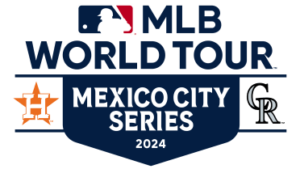
So, my spouse keeps asking me all about different stats when watching our sons play. What is OPS in baseball? How do slugging and on-base percentages get calculated? We get into these stats more of from the MLB perspective for you and more. There are even more advanced stats today like WAR (wins above replacement) that seem to get talked more about than a player hitting over .300.
Similarly, we see a lot of chatter about the newish defensive stats like outs above average and replaced by defensive runs. OPS has been around for a while, so we’ll get into that first for you as we get into baseball stats explained.
What is OPS in Baseball?
So, if you want to know what is OPS in baseball, the first step is figuring out what OPS means. It stands for on-base percentage plus slugging percentage. You just add the two stats together to get the OPS. This gives you the value of how often a player gets on base while quantifying the production of their hits. Note, this gives greater weight to extra base hits over someone who only hits singles (or a majority of singles). For example, if I have 10 doubles and you have 10 singles in the same number of a bats, OPS will rate me higher since I’ll have a higher slugging percentage.
How Does Slugging Percentage Get Calculated?
So, now, what is slugging percentage? It’s probably the slightly more complicated stat to calculate for the OPS metric. Slugging percentage takes into account the player’s total bases. It does not include walks, hit-by-pitches, fielder’s choices, etc. It only uses hits. That’s why you see TB (total bases) on box scores in apps like Game Changer for high school and travel baseball.
When you calculate slugging percentage, the number of bases on the hit are the number that you use. So a home run is four, a single is one. You add up all of the bases (the total base metric). Then, you divide by the total number of at bats. Do not include HBP or walks in the calculation. Slugging percentage is a good way to evaluate how much power a player brings to the table. It also helps if you are a coach set your batting order.
What is On-Base Percentage in Baseball?
Now, how do we calculate on-base percentage? First, On-base percentage (OBA) is the baseball statistic that tells us how much a player gets on base per at-bat. They do not get credit for a fielder’s choice, dropped third strike, or reaching base on a fielding error. You do get credit for getting hit by the pitch and walking. To calculate on-base percentage you add up the number of hits, walks, and HBP’s and divide by the total at-bats (walks and HBP count in this number where they do not for batting average and slugging percentage). This gives you the OBP.
How do You Know What a Good OPS is?
It depends on the level of play. If we are looking at MLB players, the average OPS bounces between .700 and .750 every season. If you see a professional player with an OPS above .800 that means they are a really good hitter. An OPS of 1.000 is off-the-charts. In the 2023 MLB season, Dodgers star, Mookie Betts had an OPS of 1.068 which was ridiculously high for that level of play.
In most MLB playoff series, you’ll see the OPS of players tend to trend below the regular season (not all of the time). This is from seeing higher-end pitching and the relatively small numbers over a three to seven game series. You will also see variation between position players (catchers tend to have a lower OPS than other position players).


